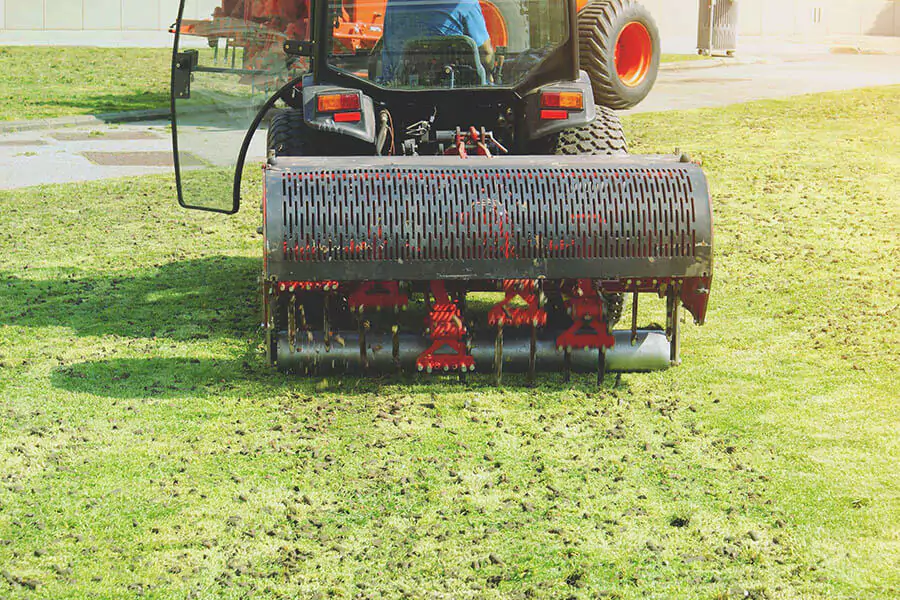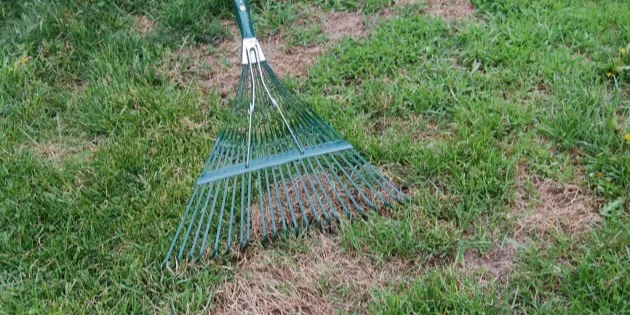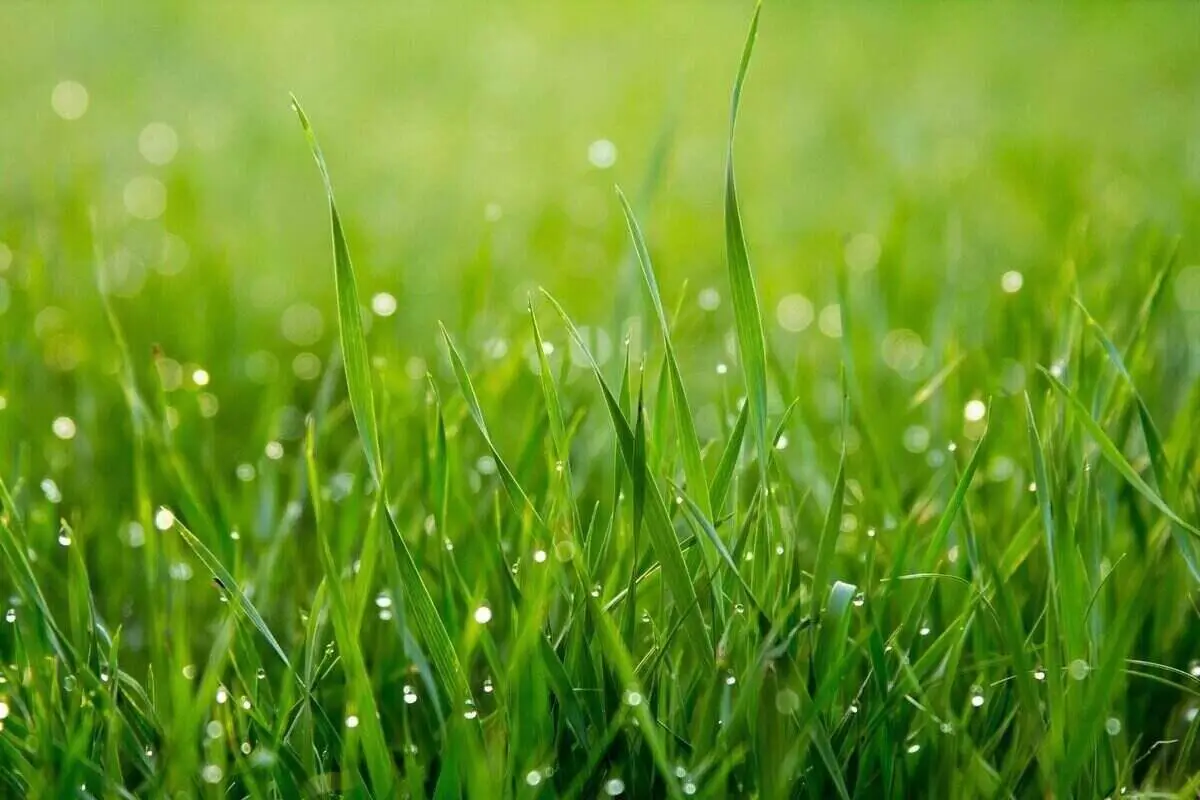How To Keep Grass Green In Winter
Last Updated on August 6, 2024 by Duncan
Winter is a tough season for grass. Unlike humans that can go inside and snuggle up, grass cant, so it’s exposed to the tough cold weather until spring comes.
Due to the tough situations, you should show your grass some love to keep it looking lush and green.
Wondering how to do it? Here are tips on how to keep grass green in winter.
What happens to grass in the winter?
Before we proceed to how to keep your grass looking spectacular during winter, it’s vital you know what happens to grass during the cold season.
Right off the bat, you should know that how the grass responds depends on its type.
Warm-season grasses often go to full dormancy with almost no real development going on, so you will find them turning a complete brown color until spring comes underway.
Although, the weather is tough even for cool-season grasses such as tall fescue, they aren’t as affected as their warm-season counterparts.
With cool-season grasses, photosynthesis is still occurring in winter so that most healthy grasses will keep their dark green coloring.
If the lawn is poorly fertilized or has serious soil quality issues, some of the grasses might turn yellow due to low access to nutrients such as nitrogen.
If your cool-season grass turns brown in winter, it means it’s been damaged by heavy snow or frost.
When grass is covered in frost, its cells become brittle, and the turf is easily damaged if any pressure is applied on the lawn.
How to keep the warm-season grass green in winter
Warm-season grass tends to enter “dormancy” in winter. During this time, the grass won’t be green as usual and won’t look lively, but you should note that it’s not dead.
The purpose of the grass going into hibernation is to conserve nutrients in its roots.
Although, dormancy is good for the warm season grass, the lack of growth or life in your lawn puts the grass at the risk of lawn diseases and even death.
The key to having a green warm season lawn in winter is to prepare the lawn for the tough winter months adequately. How do you do this? Here are tips to follow:
Fertilize your lawn
Before winter begins, give your lawn the last dose of nutrients it needs to survive the cold season. The best time to fertilize your warm-season grass is late summer or early fall.
For best results, use natural lawn fertilizer such as Scotts 44615A Green Max, rich in potassium and phosphorous that are highly effective at fighting diseases.
Potassium gives your grass strong roots, so even if the lawn’s top is damaged by storms, snow, and other items during the winter season, the roots remain strong to survive and begin new growth.
Phosphorus also comes in handy at keeping the lawn healthy, where it serves as the Vitamin C for your lawn’s immune system.
Mow your lawn high
After fertilizing your lawn, the lawn will begin flourishing. This is the perfect time to mow.
To protect your lawn from the harsh environmental changes that can damage your lawn or put it at the risk of diseases, you should mow your lawn higher than usual.
Wondering how short to cut grass before winter? We recommend you raise your mowing height by about half an inch. For a healthy lawn, never cut your grass to less than 3”.
Reduce your watering frequency
Other than adjusting your mowing, you also should adjust your watering frequency. To prevent diseases, water your lawn to only one inch per week.
For best results, spread out the watering to two to three watering sessions a week so that all of the sessions add up to an inch of water.
Taking care of your warm-season grass during winter
Preparing your lawn for winter isn’t everything. You still need to take care of the lawn during this time.
The cool thing is if you had properly prepared your lawn for the season, grass care at this time will mostly be all about observation.
Regularly inspect the lawn for water and debris. Are there trees growing near your grass? Clear away any leaves or branches that might have gathered.
Remember covering the warm season grass creates a breeding ground for diseases. The leaves also prevent the grass from getting air and sunlight.
If you live in an area prone to rain, keep a close eye on the water levels in the area, so you don’t over-irrigate your lawn.
You should note that applying too much water to your lawn causes mold and harmful bacteria to grow, damaging your lawn.
As you are observing the grass, it’s common to find some dying grass patches.
Don’t freak out when this happens or think your lawn is gone, as you can always apply grass seed or lay sod in the early spring.
To prevent the other grass from suffering the same fate, you should try to figure out why the patch is dying.
Is there too much water there? Have you applied a lot of fertilizer? Are there too many accumulated leaves?
Identify the problem’s source and ensure the problem doesn’t spread to the other parts of your lawn.
Taking care of your cool-season grass during winter
Although cool-season grass survives better during winter than its warm season counterpart, it doesn’t mean you should ignore it.
Like with warm-season grass, you need to prepare your lawn for the tough cold weather.
Some of the ways to take care of your lawn include:
Aerate your lawn
Winter is characterized by snow, and snow creates extra pressure on your lawn, leading to severe compaction.
Before your lawn suffers from compaction, give it room to breathe by aerating it in the fall.
You also should consider dethatching the lawn to get rid of thatch and leaf clumps that can become breeding grounds for diseases.
You should note that the more even and debris-free your lawn is as you are entering winter, the better.
Mow your lawn higher
Like warm-season grass, you should mow your cool-season grass in the fall as you prepare for winter.
Everyone loves a short, chopped green lawn, but this is not the season for it as a short lawn in the winter exposes your grass to the harsh temperatures, leaving your lawn unprotected from winter damage.
To keep your grass healthy, mow your lawn higher in the fall to prepare for winter. A good height is anywhere between ½ inch and ¾ of an inch higher than usual.
Fertilize the grass
With cool-season grass, the first fertilizing session is in the fall. To get the most from it, you should use the right fertilizer.
One of the best you can go for is the 16-4-8 complete balanced liquid lawn food as it gives your plants the nutrients it needs for the fall growing season and at the same time delivers a balanced formula so your grass can store the necessary macronutrients away for winter.
After applying the fertilizer, follow it up with a lawn booster to maximize your lawn’s growth and health before winter sets in.
Reduce your watering
Water pooling is a major concern during winter. Since your grass is dormant at this time, it’s not soaking in as much water as you would want it to, putting your lawn at the risk of developing puddles and suffocating or even breeding diseases.
Due to this, you should decrease the amount of water you apply to the lawn.
A good rule of thumb is to spread out your watering 2-3times a week, adding up to a total of 1 inch of water.
When watering your lawn, use a garden hose. Don’t use a sprinkler as your pipes can crack due to the expansion of ice.
Don’t plow on your grass.
Most homeowners get anxious when the snow starts falling on their lawn as they have the impression that snow will kill their lawn.
Let us put your worries to rest and tell you that snow can be good for your lawn.
Snow creates a hydrating barrier between your grass and the sharp chill of winter temperatures.
If your grass is continuously exposed to the cold chill, it’s a matter of time before it dies.
To ensure your grass doesn’t go through this, let the snow protect your lawn. As a rule of thumb, don’t plow snow on your grass, as this will create an uneven lawn when the snow finally melts.
Work at preventing winter diseases
If you have dealt with winter lawn diseases before, you know how biting they are. To keep your lawn green in winter, you have to prevent the disease from coming about at all costs.
One of the ways of doing it is to use 16-4-8 liquid lawn food that has high doses of potassium and phosphorus.
The potassium will keep the grassroots strong so the grass can hold onto the nutrients throughout dormancy, while phosphorus improves your lawn’s health so it can withstand the abysmal temperatures and winter diseases.
Still, want your lawn green? Apply the Green Booster rich in nitrogen.
Break the ice manually.
What happens when you have ice on your pathways and driveways? You throw down a rock salt or ice melt to melt the ice, right?
To keep your lawn green and healthy, you should avoid doing this as the ice melting salt tends to trickle to your lawn, burning the edges.
To keep the edges healthy, break up the ice manually—without using rock salt or chemicals.
If you live in a snowy area, and have no other option other than to use chemicals, use safer chemicals such as calcium chloride.
As a rule of thumb, avoid compounds such as calcium magnesium acetate.
The salt will safely break up the ice so you can walk safely without harming your lawn.
Level your lawn
As mentioned above, the amount of water on your lawn has a significant impact on the health of your lawn. The more the water, the higher the risk.
Since you are bound to have more water on your lawn due to snow, you should keep a close eye on where the water goes.
If there are low points on your yard, level them out, or implement the French drain.
Other tips to keep your lawn green in winter
Other than the above tips, you need to pay attention to other tips such as:
Avoid mowing grass after it has rained: When it gets moist in winter, don’t mow at this time, as doing so will cause more harm than good. The damage is more extensive if it has been snowing.
As mentioned here, using a lawnmower on wet grass will cause extensive damage to the roots and even sometimes kills the grass.
Avoid walking on the lawn: You should stay off the grass to give it a better chance of surviving the lethal winter weather.
Keep the lawn clear of objects and outdoor furniture: Wintertime isn’t the best time to bring out your lawn chairs.
The weather is harsh enough, and adding weight on the grass that is already fragile will make it turn brown.
When you leave the outdoor furniture and children’s toys on the lawn for a long time, you risk having dead spots.
The dead grass can also become diseased, luring in pests such as mice and insects.
How to keep grass green in winter. It’s all about preparation.
The key to keeping your grass green in winter is preparing adequately for the winter season.
Mow at the right height, apply the right fertilizer, and ensure your lawn has as minimal debris as possible.
When you stick to the above lawn care plan, you will save a lot of time and effort when winter comes.
Not to mention the peace of mind as you know your lawn won’t die from the cold.
And when the season arrives, much of your work will be observing the problematic areas and fix them.
For example, when you notice water pooling at a given area, level the ground.


